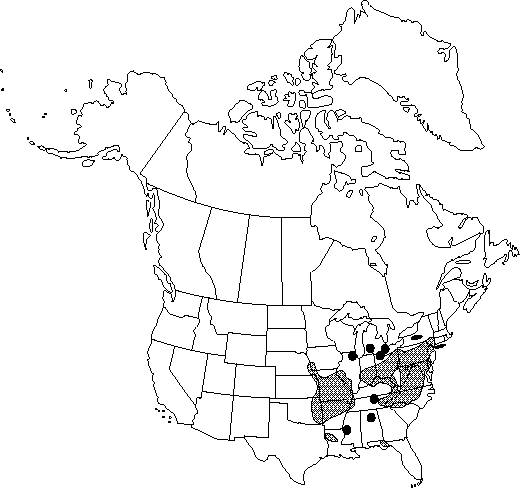Corydalis flavula
in A. P. de Candolle and A. L. P. de Candolle, Prodr. 1: 129. 1824.
Plants annual, from somewhat succulent roots. Stems 1-several, initially erect, often becoming prostrate or ascending, usually 1.5-3 dm. Leaves compound; blade with 2 orders of leaflets and lobes; ultimate lobes elliptic, variable in size, margins incised, apex subapiculate. Inflorescences racemose, commonly 6-10-flowered, equaling or barely exceeding leaves, sometimes poorly developed, cleistogamous-flowered racemes present, inconspicuous, 1-5-flowered; bracts elliptic, 6-12 × 3-7 mm, proximal bracts often leaflike or variously incised, distal reduced and entire. Flowers erect; pedicel slender, 6-15 mm or more; sepals lanceolate, ca. 1 mm; petals pale-yellow, spurred petal 7-9 mm, spur incurved, ca. 2 mm, crest high, marginal wing well developed, both crest and wing wrinkled or dentate, unspurred outer petal similar to spurred petal, 6-8 mm; inner petals 5-7 mm, blade apex ca. 2 times wider than distinctly lobed base, claw 2-3 mm; nectariferous spur less than 1/2 length of petal spur; style 1.5-2 mm; stigma wider than long, with 4 terminal papillae. Capsules pendent, linear, straight or sometimes reflexed, (14-) 18-20 (-22) mm. Seeds ca. 2 mm diam., minutely decorated on narrow marginal ring.
Phenology: Flowering early–late spring.
Habitat: Wooded slopes, bottomlands, and rock outcrops, in moist, loose soil
Elevation: 0-650 m
Distribution

Ont., Ala., Ark., Del., D.C., Fla., Ill., Ind., Iowa, Kans., Ky., La., Md., Mich., Miss., Mo., Nebr., N.J., N.Y., N.C., Ohio, Okla., Pa., S.C., Tenn., Va., W.Va.
Discussion
Selected References
None.